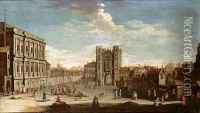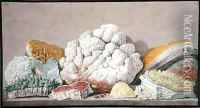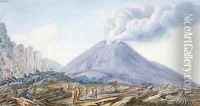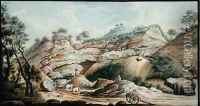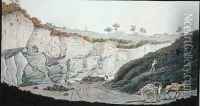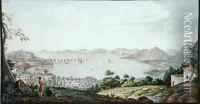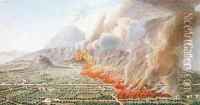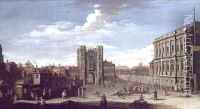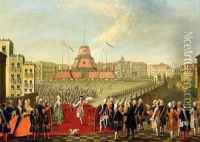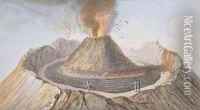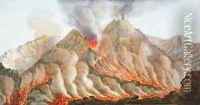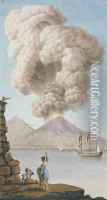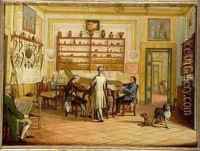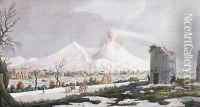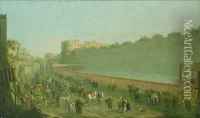Pietro Fabris Paintings
Pietro Fabris was an Italian painter, known primarily for his works depicting the landscapes, people, and culture of Naples and its surrounding countryside during the 18th century. Born around 1740, Fabris's early life and training are not well-documented, but he is believed to have been active in Naples from the 1760s.
Fabris was particularly renowned for his detailed and vibrant depictions of volcanic activity, especially of Mount Vesuvius, which was highly active during his lifetime. His paintings are significant historical records of the volcano's eruptions and the impact they had on the landscapes and lives of the people in the region.
In addition to his volcanic landscapes, Fabris also produced a number of works depicting the everyday life and customs of the Neapolitan people. He was skilled in capturing the vivacity and color of the region's festivities, markets, and street scenes.
One of Fabris's most significant contributions to the art world was his collaboration with the British diplomat and volcanologist Sir William Hamilton. Hamilton, fascinated by the geological activity of Vesuvius, enlisted Fabris to illustrate his scientific work, 'Campi Phlegraei: Observations on the Volcanos of the Two Sicilies.' The work, published in the 1770s, contained numerous prints after Fabris's drawings and is considered a masterpiece of 18th-century scientific illustration.
Although Fabris was an accomplished artist, his work was often overshadowed by the grander scale historical and mythological paintings that were popular in the Neoclassical era. Nonetheless, his paintings and illustrations remain valued for their historical significance and their portrayal of 18th-century Neapolitan life and the natural world.
Pietro Fabris continued to work and reside in Naples until his death in 1792. Today, his works can be found in various museums and collections, offering a window into the unique cultural and natural history of 18th-century Naples.
